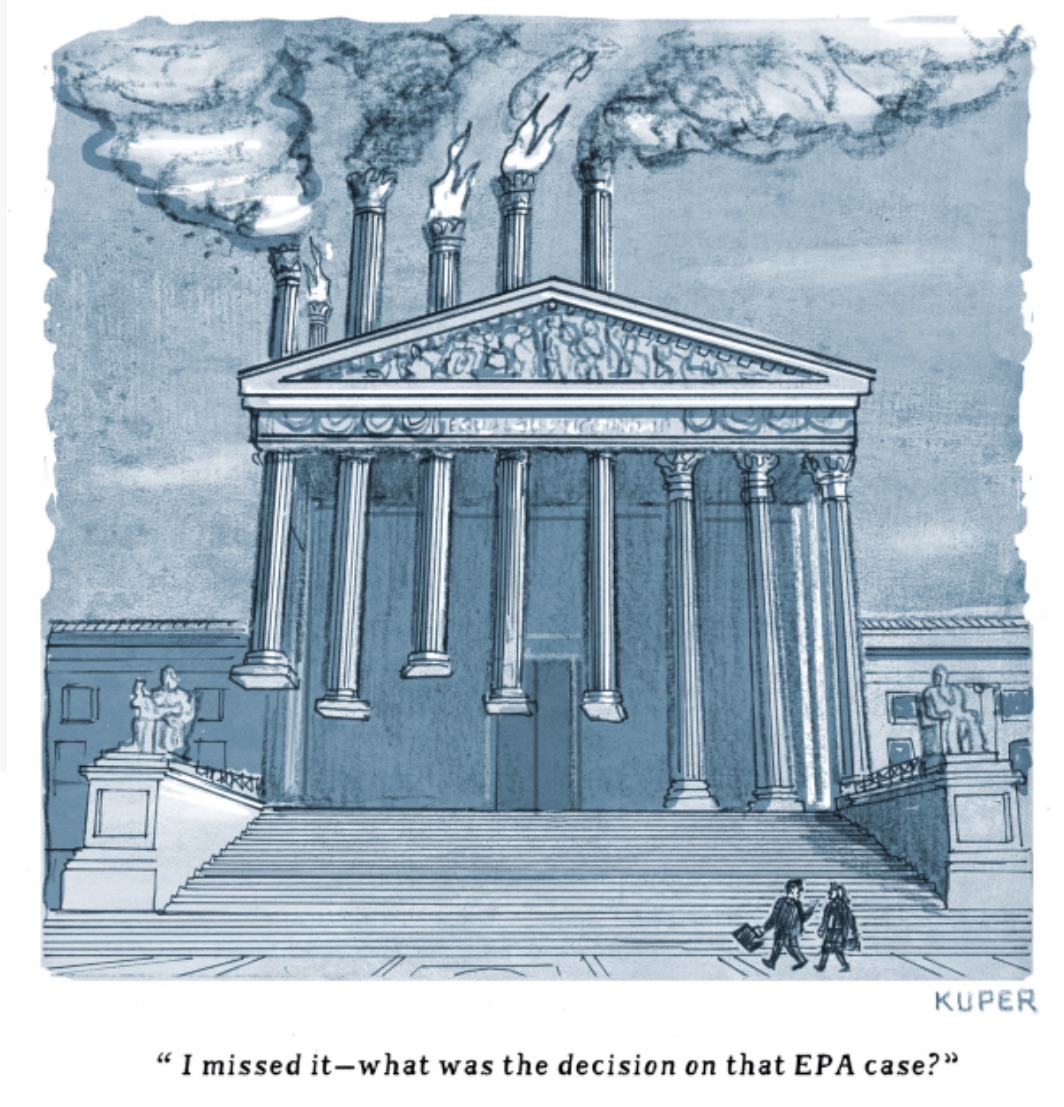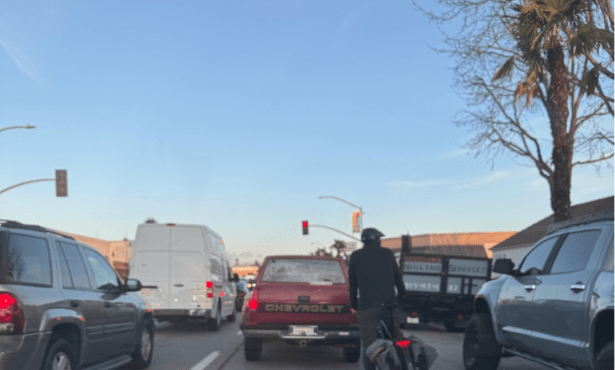Judicial Activism Kneecaps the Clean Air Act
A Week for the History Books

The Supreme Court’s rulings this past week represent an unimaginable extension of judicial activism into key societal issues. The effect on women’s rights and reproductive justice, and the expanded rights to carry guns in public places represent tectonic changes in people’s day-to-day lives; the latest ruling, narrowing EPA’s authority under the Clean Air Act, represents a decisive step accelerating climate change and advancing Earth’s eventual transition to becoming uninhabitable for humans. This judicial act stepped over a new boundary: the regulations at issue had been withdrawn, and the Supreme Court had no EPA regulation to review.
Deference to a regulatory agency’s interpretation of federal environmental laws has been a cornerstone of environmental jurisprudence for over 35 years. Congress’s stated purposes for the Clean Air Act are “to protect and enhance the quality of the Nation’s air resources so as to promote the public health and welfare and the productive capacity of the population.” Recognizing that not every form and source of air pollution could be known when the Clean Air Act was passed, Congress gave the Environmental Protection Agency (EPA) the authority to regulate any sources of air pollution that “may reasonably be anticipated to endanger public health or welfare.”
The Supreme Court recognized in 1976 that the Clean Air Act was a “drastic remedy to what was perceived as a serious and otherwise uncheckable problem.” In 1984, the Supreme Court ruled that EPA must conform to any clear unambiguous legal requirements when applying a law, but when the statute is ambiguous, courts should defer to EPA’s interpretation so long as its interpretation is reasonable. The Clean Air Act does not expressly authorize EPA to regulate carbon dioxide, but the Obama administration’s EPA interpreted the act to give it authority to regulate major sources of carbon dioxide emissions, based on the clear evidence that these emissions were accelerating climate change, causing innumerable human health effects and massive harm to public welfare from extreme storm events, drought, wildfire, sea level rise, and loss of habitat.
The Supreme Court found in 2007 that greenhouse gases qualified as pollutant subject to EPA’s control under the Clean Air Act. Based on all this authority, EPA’s 2015 Clean Power Plan sought to shift electricity production from coal to natural gas and renewables as a means to controlling carbon dioxide. This week’s decision upended that, and, despite the earlier rulings, held such a program exceeded EPA’s authority. This ruling emasculates EPA’s authority to further control greenhouse-gas emissions, jeopardizing the federal programs necessary to slow, if not stop, climate change.
From a lawyer’s view, one of the most extreme elements of this ruling was that the Supreme Court considered the issue at all. The 2015 regulations had been withdrawn. Courts have jurisdiction to resolve cases and controversies, not render advisory opinions. The Clean Power Plan was a dead letter, and normally the court would have simply declined to hear it. But instead, the U.S. Supreme Court acted to negate EPA’s authority to require power plants to control carbon dioxide, stating that this issue should be addressed by Congress. We all know that Congress is under the thumb of polluting industries and incapable of addressing climate change. The ramifications of this decision are broad — the new test created by the Supreme Court will likely invalidate dozens of rules protecting consumers, public health, as well as the environment.
The Supreme Court’s rulings announced in the last week of June 2022 invalidate long-standing, binding precedent and substitute new legal tests and standards to apply to previously well-established areas of law. There can be no better example of judicial activism to advance a particular social perspective that fundamentally destabilizes the Judicial Branch — which was created by our nation’s founders as a check and balance on the Legislative and Executive Branches. With other revelations this week of inside attacks on other core democratic principles and institutions, the threats to our democracy are as grave as they have been since our country’s founding.
Marc Chytilo is a Santa Barbara-based public interest environmental lawyer with extensive experience litigating under the Clean Air Act and other state and federal laws.



